By William Maley
Staff Writer - CheersandGears.com
January 9, 2013
Ask someone to say the first thing that comes to their mind when you mention the word hybrid, and more often than not they will say the Toyota Prius. Despite not being the first hybrid on sale in the U.S. (that honor falls to the 1999 Honda Insight, which went on sale a full two years before the Prius in the U.S.), the Prius became a sales success and symbol for the hybrid vehicle. Why? The Prius offered the right mix of unheard fuel economy, features, and practicality in one package.
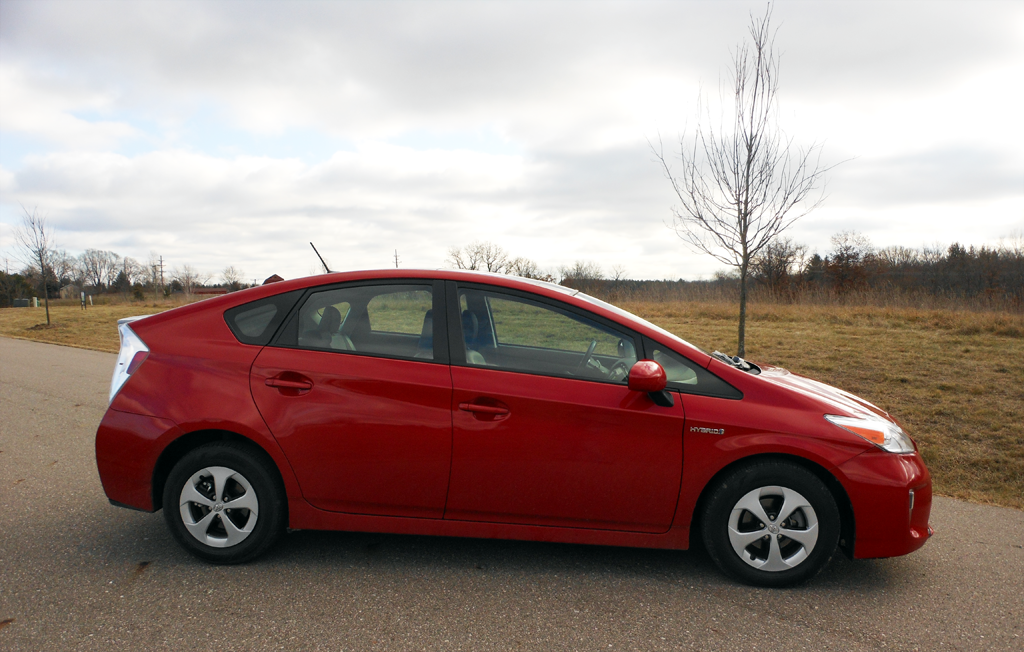
Now in its third-generation, the unassuming hybrid hatchback falls into two polar opposite camps of thought. Those who love its efficiency and reliability and those who think the Pruis is an anathema to everything held dear by car enthusiasts.
I'm an auto enthusiast, so when I recently spent a week in a 2012 Toyota Prius, I naturally approached the car with skepticism. Is it as good as the high fuel economy fans claim? Is it kryptonite to automotive enthusiasts? Read on to find out.
Encounters of the Hybrid Kind
The third-generation Prius is very much like the previous-generation model with its alien spaceship look. The third-generation model carries on the oval-esque shape with some aerodynamic tweaks including a smoother front end, squared-off corners on the rear end, and a new rear spoiler. These design changes help drop the drag coefficient from 0.26 cd to 0.25 cd.
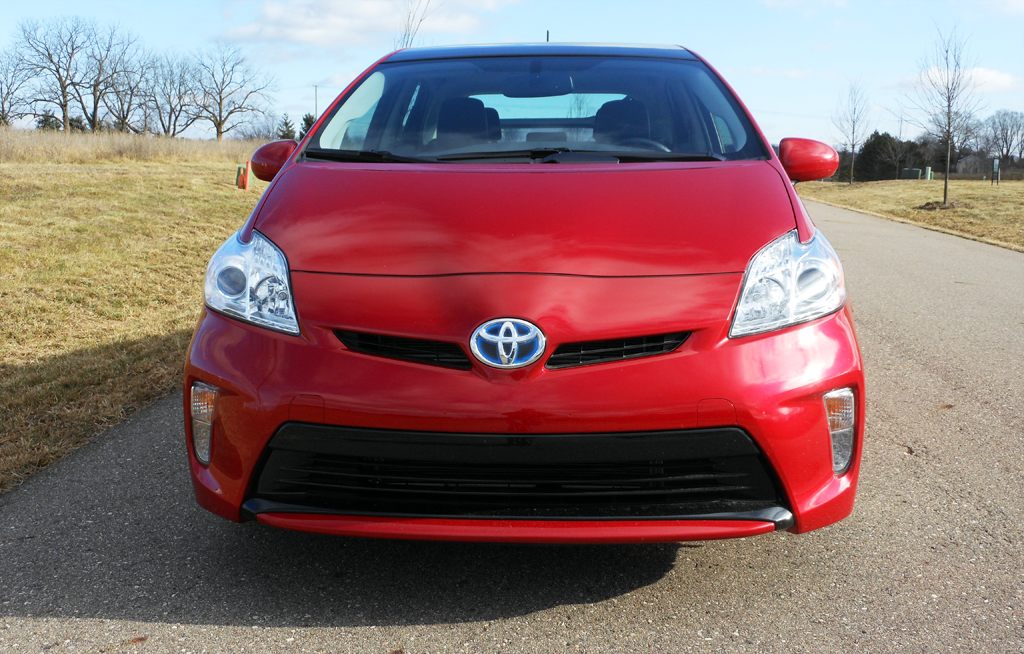
Other items of note include a set of LED taillights and an optional solar panel (part of a $3,820.00 Deluxe Solar Roof package) that power fans to cool down the vehicle’s interior without turning on the vehicle. I didn't get chance to try it since the average temperature here in Detroit was in the mid-thirties during my time and I rather enter a warm, not cold Prius. What would make this optional solar panel even better is the ability to charge the battery when the Prius is parked and keep the Prius warm in winter.
Inside, the alien spaceship design theme continues with a floating center stack, a uniquely-styled shift knob, and a digital gauge cluster sitting on top and in the middle of the dashboard. The placement of gauge cluster does make it somewhat harder to make a quick glance while on the move. My test Prius did come with a heads-up display which had a speedometer and a power gauge letting you know how much power you’re drawing from the hybrid system. I do want to talk to the person who decided to hide the buttons for the heated seats underneath the center stack. The only way you know where they’re hiding is when you enter or exit the Prius. Did no one at Toyota bring this up during one of the design meetings? Seating was decent for both front and rear passengers with enough head and legroom.
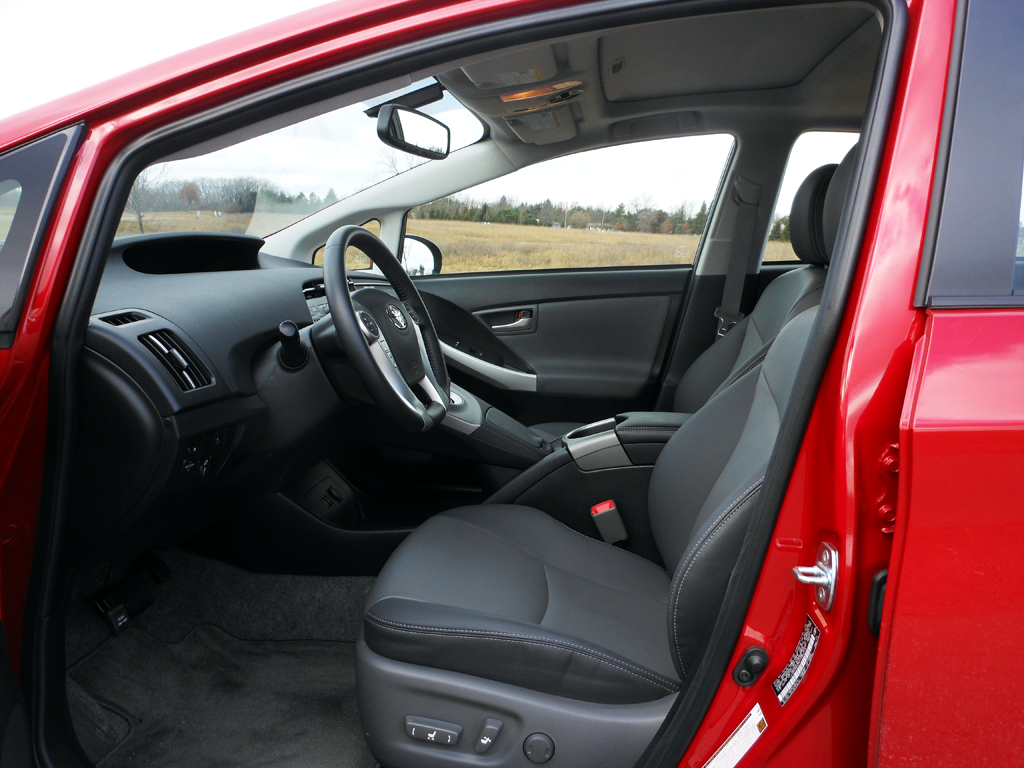
Materials are what you would find in current Toyota models; hard plastics and very synthetic-feeling leather. This would be ok if the price tag of this Prius wasn’t $33,118.00. The only real positive to the interior is that build quality is very good throughout the interior.
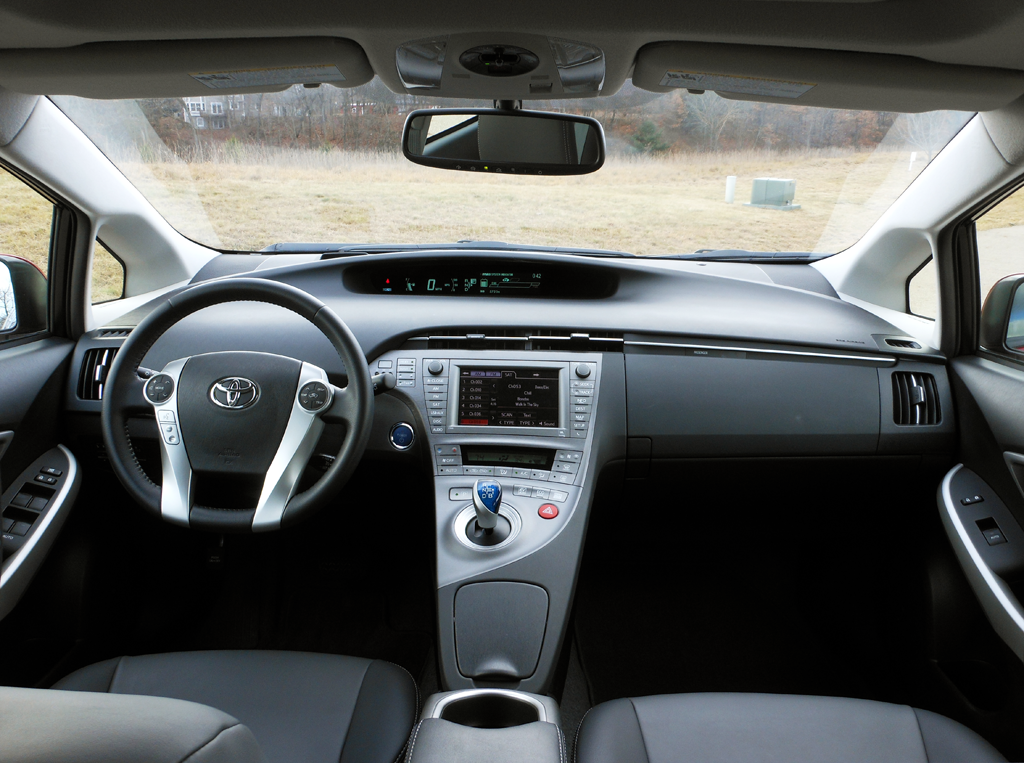
As I mentioned earlier, this Prius was equipped with the $3,820.00 Deluxe Solar Roof package. Besides the solar roof, the package includes a seven-inch touch screen, navigation, Toyota’s Entune System, Bluetooth, an eight-speaker JBL system, and Toyota’s safety connect which provides emergency assistance services. The touchscreen was very responsive when pressed and provided the right amount brightness whether it was day or night. The eight-speaker JBL system provided ok sound, but I found that I had to turn it up when driving the Prius on the highway as there was too much road noise. As for Entune, I didn't get chance to try it since I didn't have the application on my iPhone to utilize the system. Yes, you need the Entune application on either your iPhone or Android phone to use it.
Under the Skin, It’s a Prius Alright
Pop the hood of the Prius and right before your eyes is one part of Toyota’s Hybrid Synergy Drive; a 1.8L Atkinson cycle four-cylinder engine producing 98 horsepower (@ 5,200 rpm) and 105 lb-ft of torque (@ 4,000 rpm), and a electric motor producing 80 horsepower and 153 lb-ft of torque. Total power output is rated at 134 horsepower. The other part of Toyota’s Hybrid Synergy Drive is a Nickel-Metal Hydride battery pack sitting in the back of the Prius. Your only transmission is a CVT.
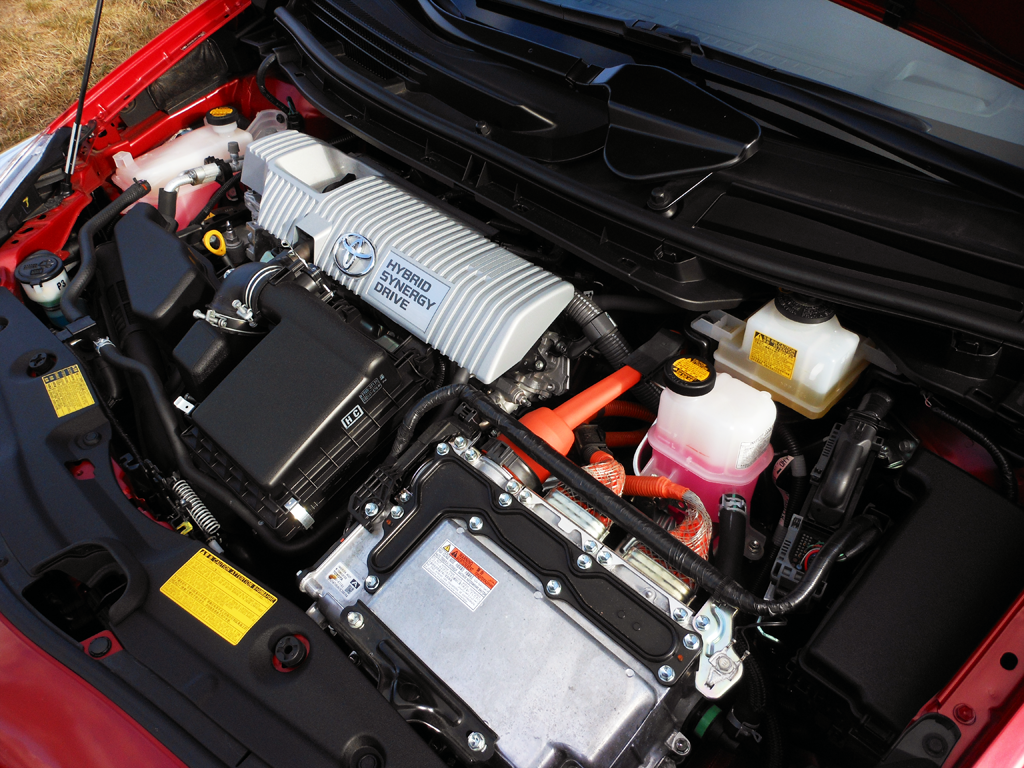
The Prius’ powertrain gets the job done. It will take a few seconds longer to get up to the speed on the road. Not much noise from either the engine or CVT enters the cabin when you accelerate normally. If you need to get a move on because there is a larger vehicle bearing down onto you or need to merge onto the highway, the drone of the engine and CVT are very apparent. Thankfully, the hybrid system seamlessly transitions electric power.
The center stack has three buttons that can change the behavior of the hybrid system. The first is an EV mode which allows the Prius to travel a short distance on electric power alone below 25 MPH. The hybrid system will turn if you go above 25 or press further down on the pedal. With a light foot, I was able to go about a mile on electric power alone. Next is Eco mode which reduces throttle response in an emphasis to get better fuel economy numbers. This is ok if you don’t have a lot of traffic behind you or in a hurry to move along. If you don’t meet either or the criteria, leave Eco mode off. Finally there is Power mode which is the opposite of Eco mode. This mode noticeably increases throttle response to help you in certain situations like merging onto a highway.
Fuel economy is very impressive for this small car. The EPA rates the Prius at 51 City/48 Highway/50 Combined. During my week with the Prius, I averaged 47.9 MPG with mostly suburban driving and sticking my foot into it.
Ride and handling is taken care with a pair of MacPherson struts with a stabilizer bar up front and a torsion beam setup in the rear. While the setup isn’t technologically advanced like the rest of the Prius, it provides a somewhat comfortable ride. I did wish for some more damping when driving over craters that are called potholes in the Detroit area.
Steering for the Prius comes in the form of an electric power-assisted rack-and-pinion system. The steering has some heft and some feel, something the old Prius lacked. That doesn’t make it a driver’s car since the Prius’ suspension is more tuned for comfort and the standard low-rolling resistance tires don’t provide enough grip.
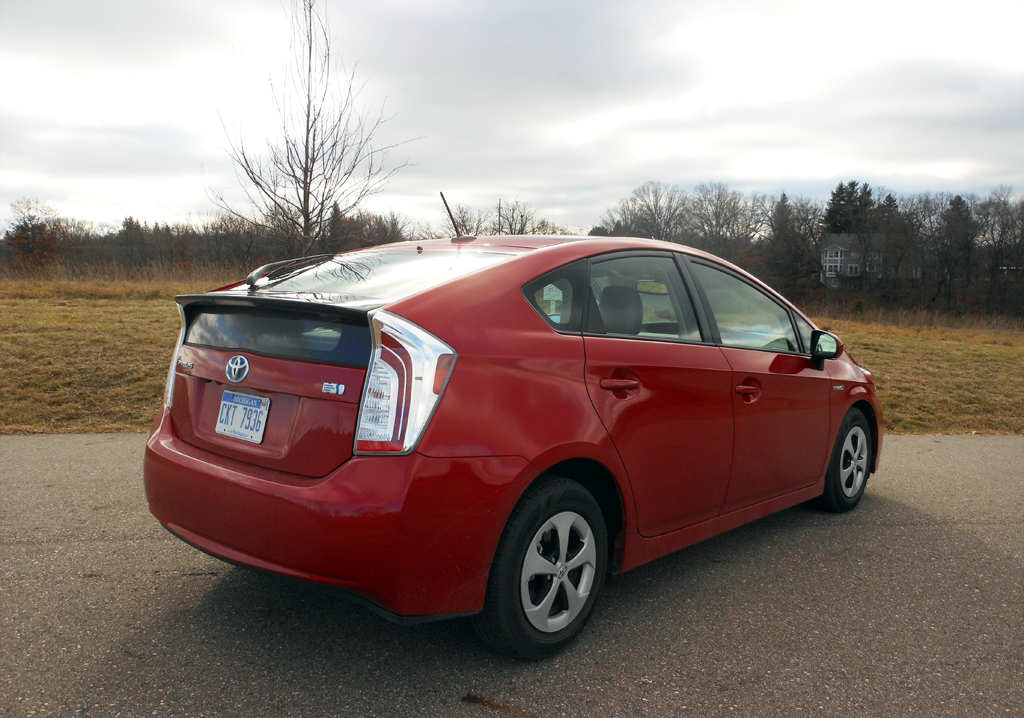
The Prius is a quiet vehicle when driven below 50 MPH. Go above that and you’ll notice an abundance of road and wind noise. I’m hoping with the next-generation Prius, Toyota puts in some more sound deadening material. Visibility is very good for the front and side. Rear visibility takes a hit due to the rear hatch shape and the large spoiler sitting in the middle of the hatch. Thankfully, the Prius did come equipped with a standard rear view camera.
The Prius truly delivers on its promise of greenness with some impressive fuel economy numbers, clever technologies to make every use up every last drop of gas, unique design, and comfortable ride. However, the Prius has some faults. The road and wind noise while going above 50 MPH tops my list followed by the interior materials.
That said the Toyota Prius is the perfect vehicle for someone who commutes in town and wants to tell everyone that they’re saving the planet. For me, I’ll pass on the Prius.
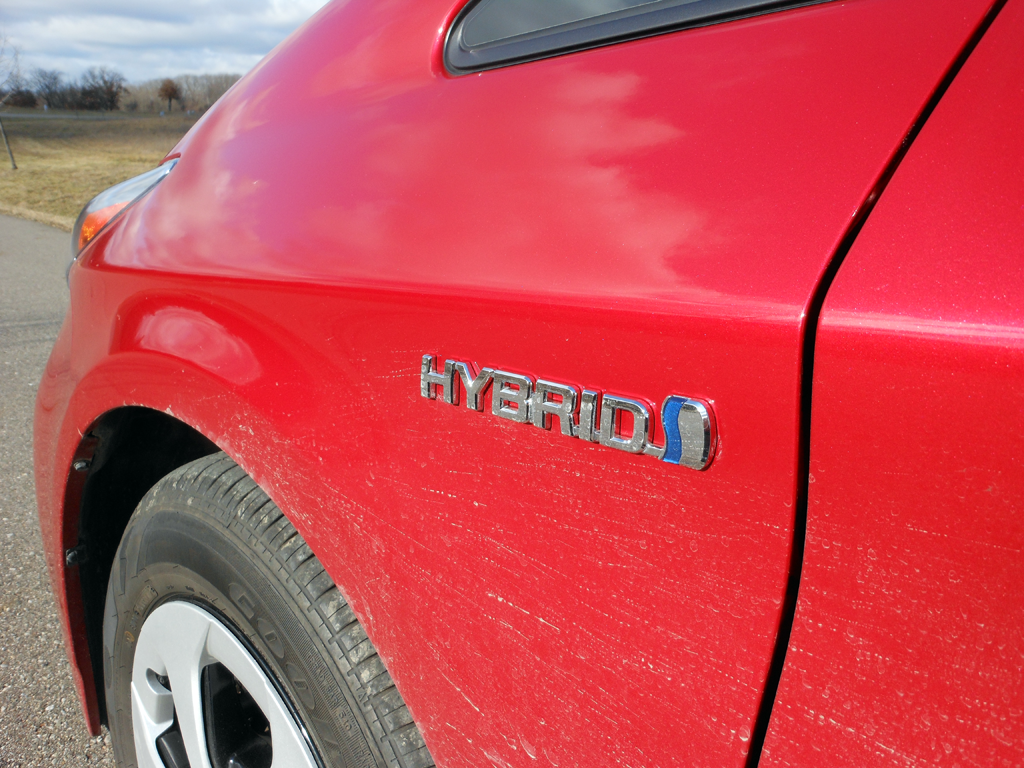
Cheers
Fuel Economy
Technology
Exterior Looks
Somewhat Comfortable Ride
Jeers
Wind and Road Noise at Speed
Engine and CVT During Hard Acceleration
Materials Used in the Cabin
Disclaimer: Toyota provided the vehicle, insurance, and one tank of gasoline.
18 images
0 comments
Year - 2012
Make – Toyota
Model – Prius
Trim – Four
Engine – 1.8L Atkinson cycle four-cylinder, Electric Motor
Driveline – Front-Wheel Drive, Electronically Controlled continuously Variable Transmission
Horsepower @ RPM – (Gas) 98 HP (@ 5,200 RPM), (Electric) 80 HP (N/A), (Combined) 134 HP
Torque @ RPM – (Gas) 105 lb-ft (@ 4,000 RPM), (Electric) 153 HP (N/A), (Combined) N/A
Fuel Economy: City/Highway/Combined - 51/48/50
Curb Weight – 3,042 lbs
Location of Manufacture – Tsutsumi, Japan
Base Price - $28,235.00
As Tested Price - $33,118.00 (Includes $760.00 Destination Charge)
Options
- Deluxe Solar Roof Package: $3,820.00
- Carpet Floor Mats & Cargo Mat: $225.00
- Cargo Net: $49.00
- First Aid Kit: $29.00
William Maley is a staff writer for Cheers & Gears. He can be reached at [email protected] or you can follow him on twitter at @realmudmonster.

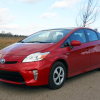




-3707742431.jpg.06edf8e14f4ccf35c60d4774a543cc11.jpg)


Recommended Comments
Join the conversation
You can post now and register later. If you have an account, sign in now to post with your account.
Note: Your post will require moderator approval before it will be visible.